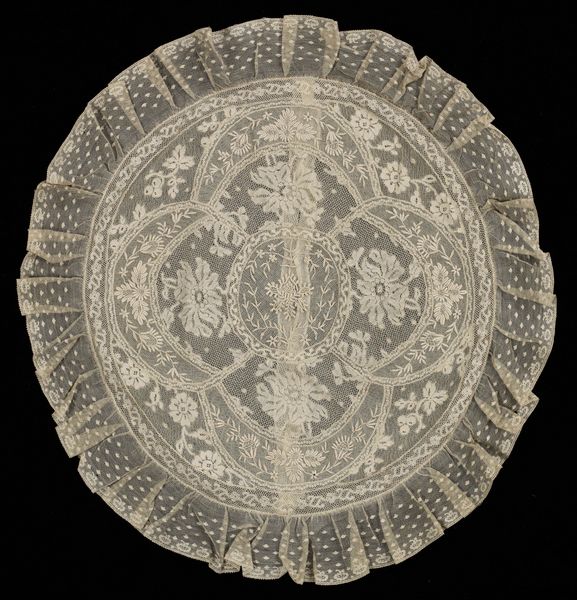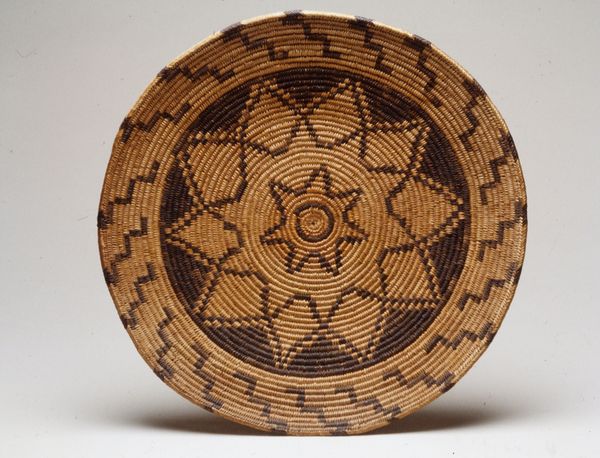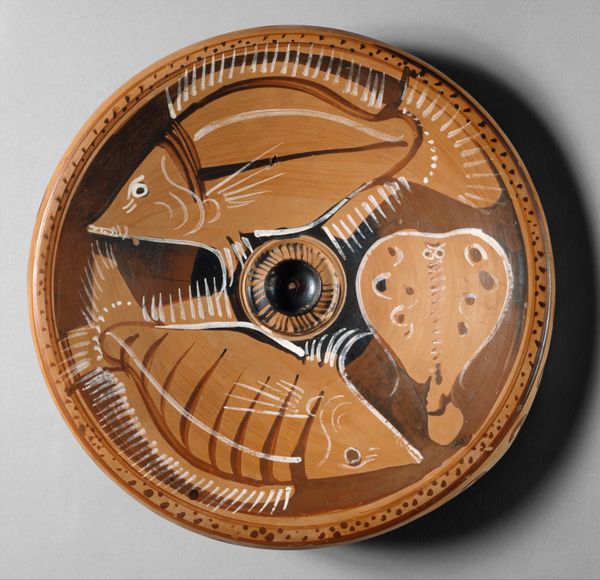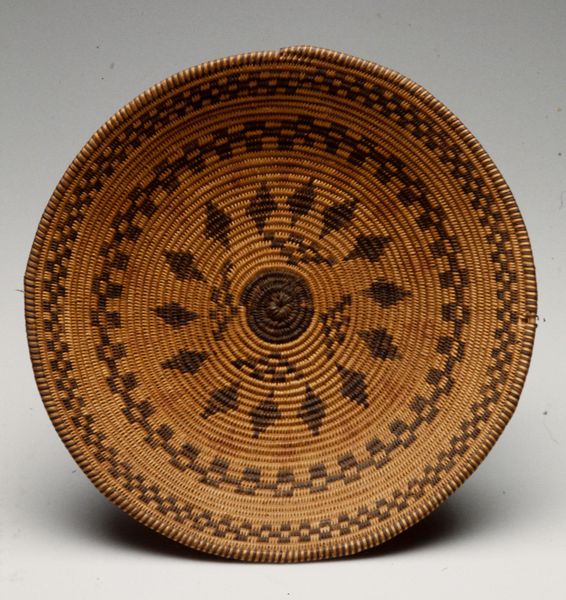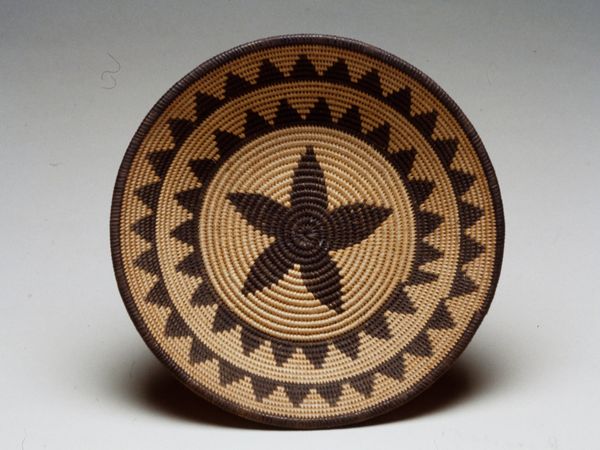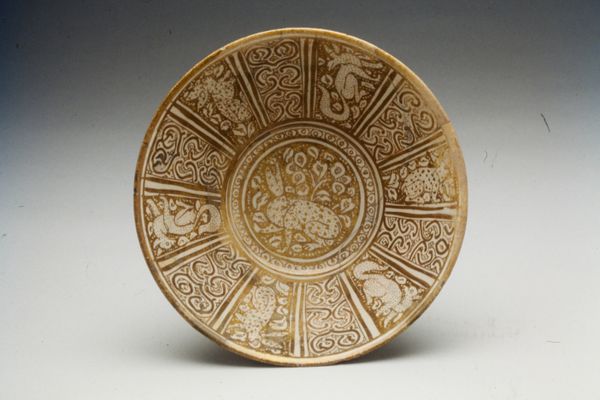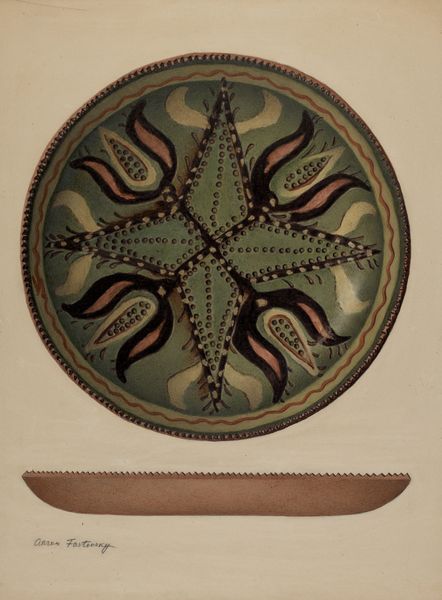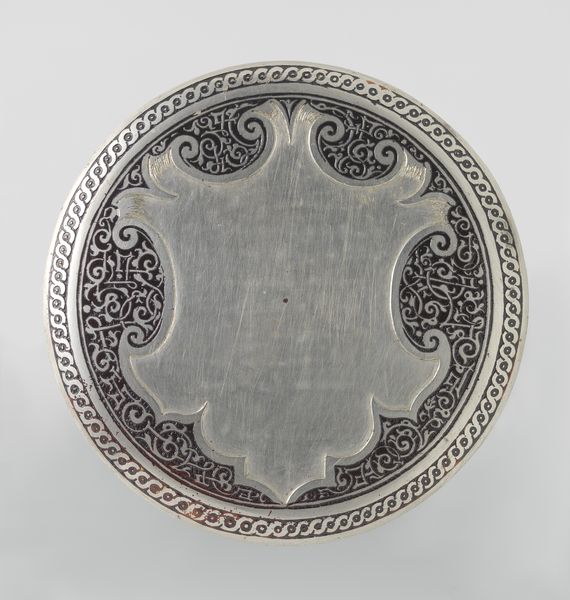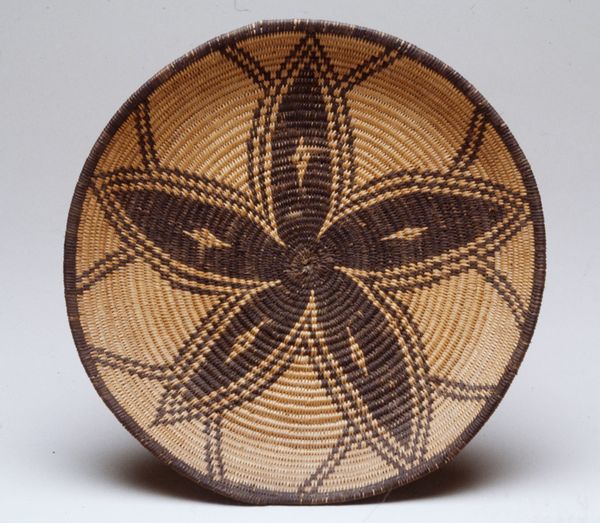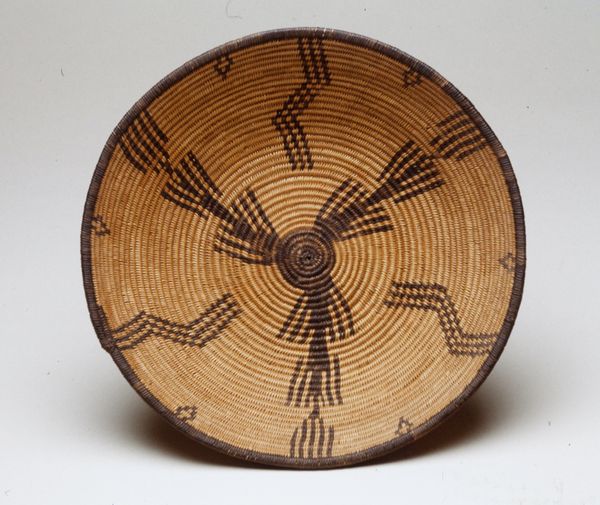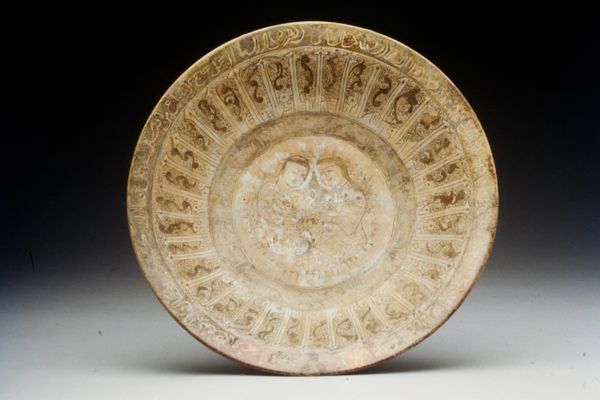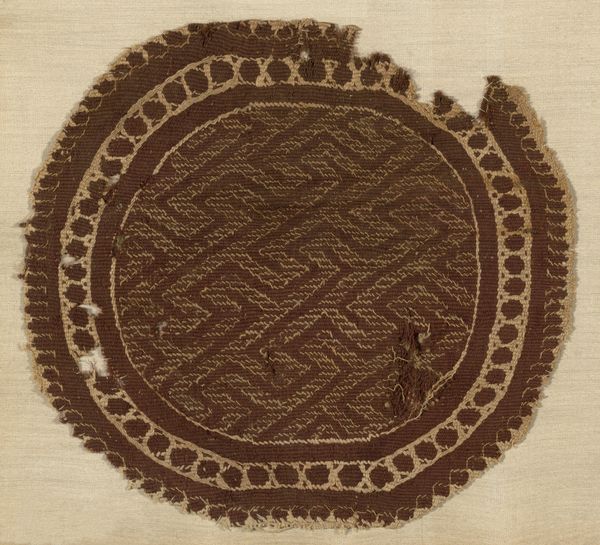
carving
#
carving
#
geometric
#
carved
#
line
#
decorative-art
Dimensions: 3/8 x 6 in. (0.95 x 15.24 cm) (without cord)
Copyright: Public Domain
Editor: This object, titled "Kapkap," is a carving made of wood, dating back to around the 19th century. Its circular design and contrasting dark and light materials give it an intriguing graphic quality. How do you interpret this piece? Curator: The "Kapkap," beyond its aesthetic appeal, functions as a lens through which we can examine cultural exchange and colonial impact. Pieces like this, displayed in museums, are often decontextualized. Have you considered where it was originally worn? Editor: Not specifically, but it looks like it could be some sort of pendant? Curator: Exactly! Worn as pendants in Melanesia, they were status symbols. This example highlights a tension: indigenous artistry appropriated by colonial narratives, then repackaged and presented to a Western audience. It also raises the question: how does exhibiting these items in museums affect our understanding of indigenous cultures? Editor: That's a great question, particularly as it appears more abstract than, say, portraiture from the same time. Curator: Precisely. That "abstraction" may signify something very specific in its culture of origin, its display transforms it into a piece valued through Western aesthetic paradigms. Is its original cultural function truly being honored? Editor: So it’s about being critically aware of the institution's role in shaping our understanding. I hadn't considered that angle. Thanks! Curator: Absolutely. Context always matters when interpreting historical objects. And critically examining whose story is told, and how, helps unlock deeper understandings.

